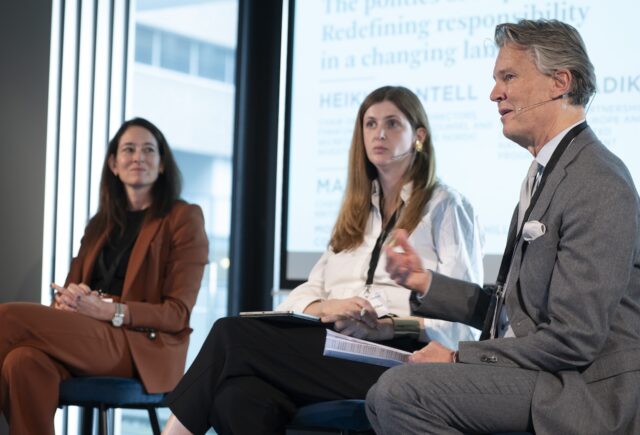Ronald Lenz of the Hague Institute for Innovation of Law opened this year’s Impact Investor Conference highlighting the justice gap and why SDG 16 should be an investment priority.

“What does it mean to invest in justice?” was the question asked by the keynote speaker Ronald Lenz, director of innovation at the Hague Institute for Innovation of Law (HiiL) at this year’s Impact Investor Conference.
Lenz kicked off the conference in The Hague, the ‘City of Peace and Justice’, highlighting the need to invest in SDG 16 – peace, justice and strong institutions – and presenting the case for justice as the foundation upon which other sustainable development goals can succeed.
“A predictable, fair and accessible justice system is just as vital as roads, hospitals, energy grids or wifi. It gives people and businesses the confidence to trade, invest, to build a better future for themselves and future generations,” he added.
HiiL, a Dutch non-profit whose mission in Lenz’s words is “to make justice accessible, affordable and easy to understand for all” has partnered with ministries, judiciaries, innovators and communities to help people resolve justice problems and plug the justice gap, as Impact Investor reported on earlier this year.
Addressing the conference attendees, Lenz said that today, 5.1 billion people, equivalent to around two thirds of the global population, lack meaningful access to justice.
“Behind this number there are real people. Small business owners who cannot get their contracts enforced, farmers whose land or wages are taken, women denied their inheritance or survivors of domestic violence with nowhere to turn,” he said.
The costs of the justice gap can also be measured in economic terms said Lenz pointing to OECD statistics, which estimate that the costs generated by unresolved legal issues are between 0.5% to 3% of GDP in most countries.
“When justice systems improve, economies grow. Across 83 countries, research shows that a 1% increase in access to justice can boost 5-year GDP growth by nearly 1%,” he added.
Investing in justice
Lenz provided several examples of successful justice innovations supported through four channels of investment, including; outcomes-based financing, direct equity and debt impact investing, philanthropic and catalytic funding and pooled investment vehicles.
“Together these mechanisms show that investing in justice is very possible, measurable and scalable and although it is still early days for investing in SDG-16, the foundations are being laid and the opportunities for impact are very real and promising,” he added.
Lenz also highlighted a number of challenges facing those wanting to invest in justice including the difficulty in defining the varying forms of interconnected justice innovation and the absence of a global framework to measure justice impact, as well as the perception problem.
“Justice is still often seen as a charity or government responsibility, not as an investment opportunity. Even when business models are sound, investors can be weary, especially when revenues depend on government regulation,” he said, adding that restrictions on the provision of private legal services in many countries were also problematic.
“Investing in justice is complex, the market is young and the risks are real but when evidence, entrepreneurship and institutions come together, the results can be powerful and lasting,” he concluded.





